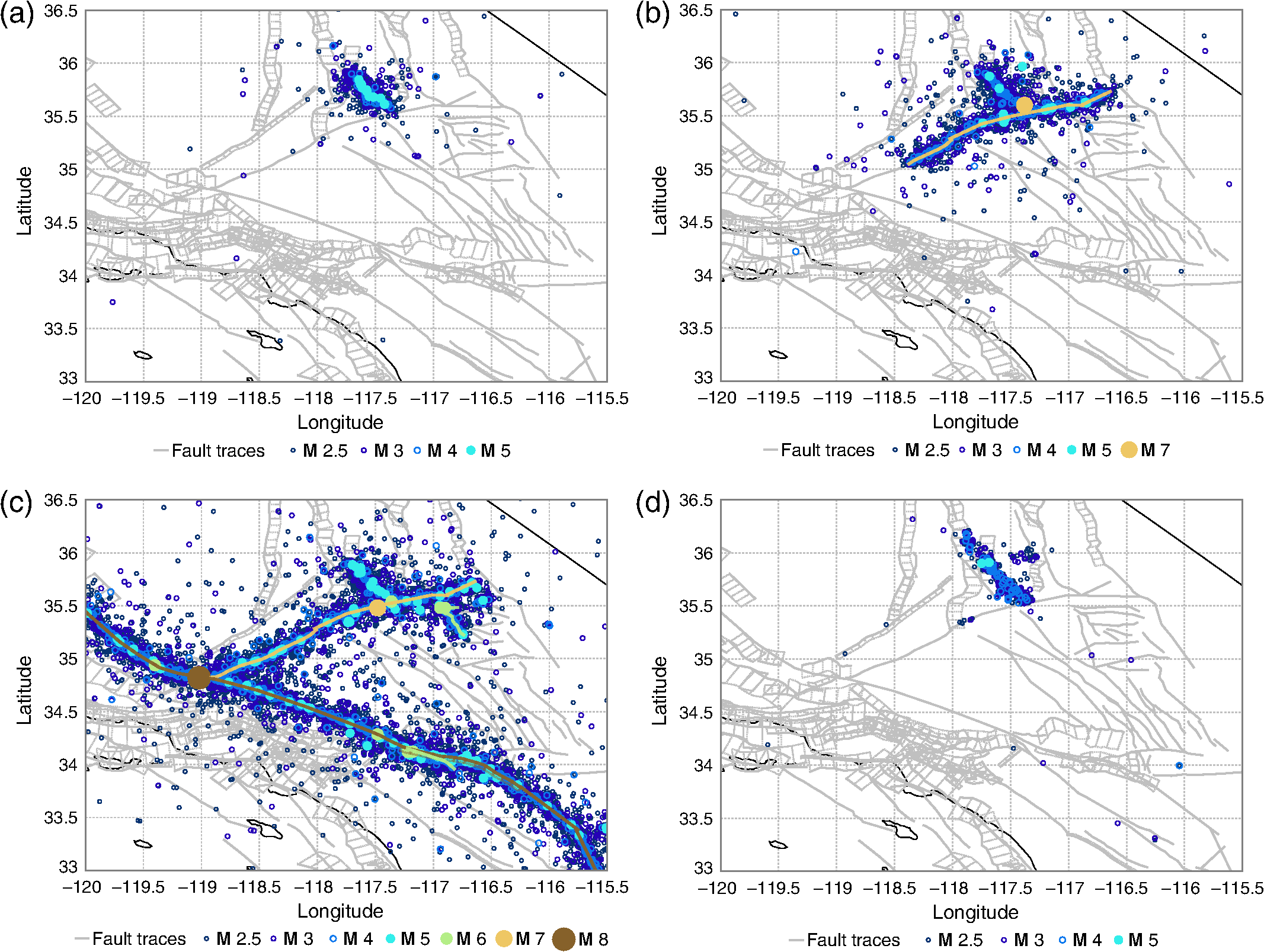Ridgecrest Operational Earthquake Forecasting paper published in Seismological Research Letters
Our paper on “Operational Earthquake Forecasting during the 2019 Ridgecrest, California, Earthquake Sequence with the UCERF3‐ETAS Model” was just published in Seismological Research Letters. Give it read here, or see Figure 1 below.
Kevin R. Milner, Edward H. Field, William H. Savran, Morgan T. Page, Thomas H. Jordan; Operational Earthquake Forecasting during the 2019 Ridgecrest, California, Earthquake Sequence with the UCERF3‐ETAS Model. Seismological Research Letters doi: https://doi.org/10.1785/0220190294

Figure 1. Percentile scenarios: Map view of Uniform California Earthquake Rupture Forecast, Version 3–epidemic‐type aftershock sequence (UCERF3‐ETAS) synthetic catalogs of aftershocks to the Ridgecrest sequence (preferred model). Shown are 30 days of simulated seismicity immediately following the M 7.1 event. UCERF3 faults in the map region are plotted with gray outlines, except for faults that participate in events in the synthetic catalogs, which are plotted in the same color as the event hypocenter. (a) A typical catalog, defined as the catalog that lies at the 50th percentile with respect to the total number of simulated aftershocks across all 100,000 simulations. That catalog has 2584 M≥2.5 events and multiple M≥5 events, but no supraseismogenic events on UCERF3 faults. (b) A less probable catalog (97.5th percentile, 7574 M≥2.5 events) in which the Garlock fault was triggered in an M≥7 supraseismogenic aftershock. (c) The most extreme catalog from the suite of 100,000 simulations with 39,550 M≥2.5 events in which an M≥7 Garlock aftershock triggered an M≥8 earthquake on the San Andreas fault. (d) The observed earthquakes with M≥2.5 within 30 days of the M 7.1, accessed from Comprehensive Catalog (ComCat) on 6 December 2019.
